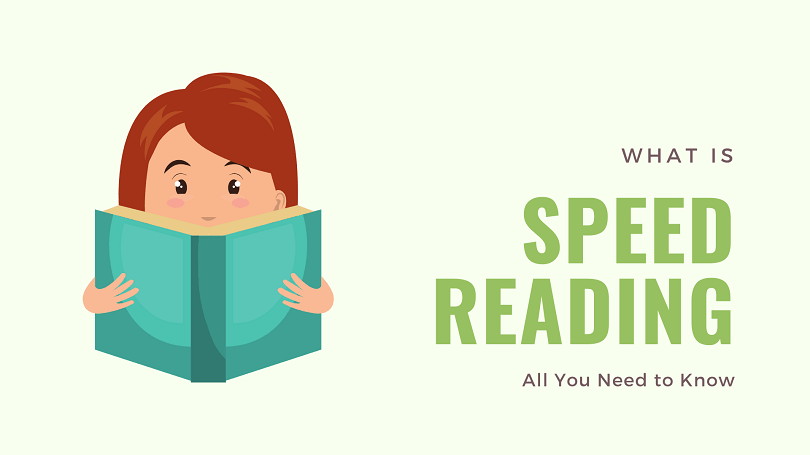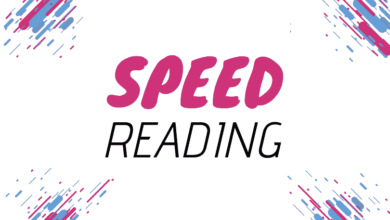Speed Reading is an Asset to Your Skill Set
Speed Reading Helps Read a Book in Few Minutes

Any of a number of strategies claiming to improve one’s ability to read quickly is known as speed reading. Speed reading is a method for reading books at a high speed while maintaining proper understanding. Chunking and reducing sub-vocalization are two speed-reading techniques. Books, videos, software, and seminars are all used in the various speed-reading training methods available. Because there is little empirical evidence for rapid reading, its value appears to be speculative. Reading involves the use of various physical organs.
Most individuals are unaware that, because fast reading is more efficient, it utilizes these organs to significantly greater extents than conventional reading. The majority of people read at a rate of 250 words per minute (wpm), however, others are naturally faster. The ability to speed read, on the other hand, may allow you to double this rate.
Achieving effective speed reading requires striking a balance between speed and comprehension. According to studies, the faster you read, the less information you absorb, especially when it comes to recalling details. So, even if you’re pressed for time, fast reading is certainly not the way to go when reading a difficult legal or technical paper.
Methods of Speed Reading:
#1 Auditory: In auditory reading, the words are said aloud and at a faster pace. Users have recorded speeds of up to 450 words per minute. When these readers read, they do not use their lips, tongues, or vocal cords, but they softly utter and listen to the words. Auditory readers are proficient readers who have large enough vocabularies to recognize words fast.
#2 Mental: In Mental Reading, the readers move their lips and may even imitate speaking with their tongues and vocal cords. Because they must read word-by-word at the rate they speech, their reading range is quite slow (150 to 200 words per minute). Because of their sluggish reading speed, many readers have poor comprehension.
#3 Visual: In visual Reading, the readers utter either a few words or none at all. When visual readers read, they use their vision and thoughts, but not their lips, throats, or ears. Because they read ideas rather than particular words, they can read a series of words at once. They read at a speed of more than 400 words per minute.
Interpretation of Meta Guiding:
It is the practice of using a finger or a pointer, such as a pen, to guide the eye along the length of a passage of text in order to make it go faster. It includes creating invisible shapes on a page of text to increase the optical span for faster reading.
The Meta guiding will activate their visual brain, extend their visual span (allowing them to see the entire line), and even imprint the information in their subconscious for subsequent recall. It’s also said to speed up reading by reducing sub-vocalization. Since it urges the eye to skim over the text, this can diminish understanding and recall, as well as lead to the omission of crucial text information.
Interpretation of Skimming:
When reading an essay, it can mean reading the beginning and finish for info, then reading the first line of each paragraph to rapidly determine whether to seek still more detail, as indicated by the questions or goal of the reading. This comes easily to some people, but it is usually learned via training.
Adults are more likely than youngsters to engage in skimming. It is carried out at a faster rate (700 words per minute and greater) than regular comprehension reading (about 200–230 wpm), resulting in lower comprehension rates, especially when reading material with a lot of information.
Interpretation of Scanning:
Scanning is the process of actively looking for information utilizing a mind-map (a graphically hierarchical organization of information that highlights the interconnectedness of the material for easier retrieval) created by skimming. Meta-guiding your eyes employ these strategies.
The main idea, as well as headings and crucial information, are all included in scanning. Scanning is the process of performing a visual search of the page’s contents. This is done by reading both horizontal and vertical words at the same time and then looking for any essential information.



